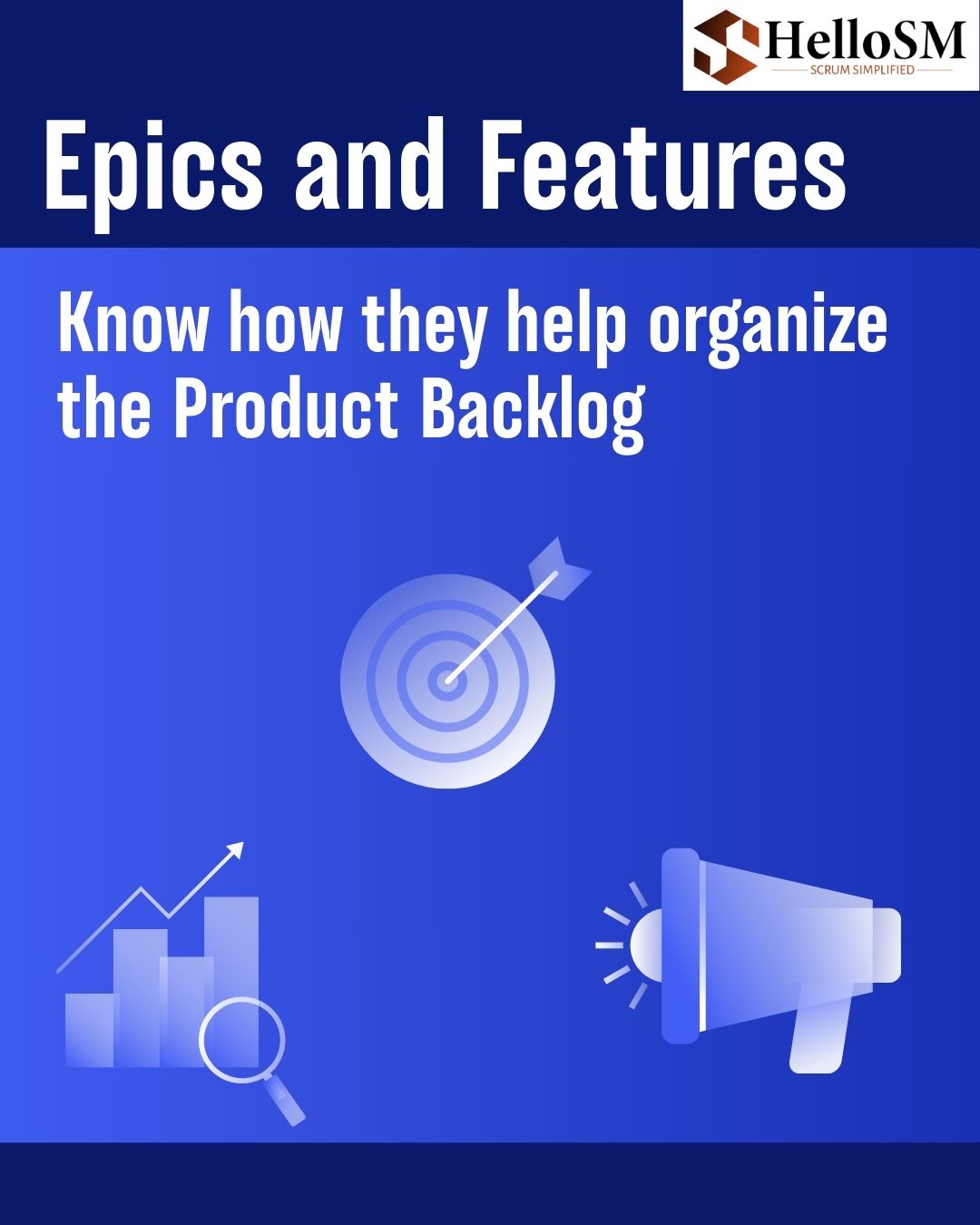In the world of Agile and Scrum, one question often arises during training sessions and practical implementations: What exactly are Epics and Features, and how do they fit into the Product Backlog? To answer this, let’s first understand the foundation, the Product Backlog. The Product Backlog is often described as the to-do list for the Scrum Team. It contains an ordered list of all the work required to maximize the value of the product. This includes new features, enhancements, bug fixes, addressing technical debt, and any other tasks that contribute to the product’s growth.
While Scrum itself does not mandate concepts like Epics or Features, many Product Owners adopt these complementary practices to bring structure and clarity to their backlog. Let’s dive deeper.
Product Backlog – A Quick Recap
The Product Backlog is managed by the Product Owner. They are accountable for the content, prioritization, and continuous refinement of backlog items. However, backlog management is not a one-person job. Collaboration between the Product Owner and Developers ensures that the highest-value work is identified and delivered. The backlog includes:
- New features that enhance user experience.
- Bug fixes that maintain product stability.
- Technical debt resolutions like refactoring, documentation improvements, or upgrading tools.
- Ideas or improvements that align with product goals.
One crucial point is that backlog items should be sized appropriately. Items at the top of the backlog are refined enough to be completed within a Sprint, enabling the team to deliver an Increment of value regularly.
What are Epics and Features?
Now, where do Epics and Features come into the picture? Think of Epics and Features as folders that help the Product Owner organize the backlog in a meaningful way. Just like organizing files into folders on your computer makes it easier to manage, grouping backlog items into Features and Epics provides clarity and structure.
- Epic: An Epic is a large body of work that cannot be completed within a single Sprint. It is a high-level initiative that may span across multiple Sprints and is typically broken down into Features and smaller Product Backlog Items (PBIs).
- Feature: A Feature is smaller than an Epic but still larger than an individual backlog item. A Feature may also take more than one Sprint to complete but is often divided into multiple PBIs. For example:
This layered approach makes it easier for the Product Owner and team to plan roadmaps, forecast delivery, and communicate progress to stakeholders.
Why Use Epics and Features in Scrum?
Although Scrum doesn’t prescribe Epics and Features, they offer several benefits when adopted thoughtfully:
- Clarity in Large Projects
When working on complex products, the backlog can quickly become overwhelming. Grouping related items into Epics and Features provides better organization.
- Improved Forecasting
Since Epics and Features represent larger chunks of work, they can help the Product Owner communicate timelines, dependencies, and release plans more effectively.
- Enhanced Collaboration
Teams can break down Features into PBIs together, ensuring shared understanding of what needs to be done.
- Roadmap Alignment
Epics and Features make it easier to link backlog items to the broader product strategy and roadmap.
- Tool Support
Tools like Jira, TFS, or Azure DevOps support Epics and Features, making backlog management more intuitive.
Word on Technical Debt
It’s important to note that technical debt, refactoring code, updating libraries, or adding missing documentation also competes for space in the Product Backlog. While Epics and Features often focus on delivering new value, technical debt ensures long-term product sustainability. A balance between new features and technical improvements is key.
Practical Use of Epics and Features
- Sizing Matters: Individual backlog items should always be small enough to fit within a Sprint. Features and Epics, however, may span multiple Sprints.
- Collaboration is Crucial: Developers, not the Product Owner, are responsible for sizing backlog items since they best understand the effort involved.
Flexibility in Structure: Some tools nest Features under Epics, while others reverse the hierarchy. Either approach is acceptable, as long as it adds value to the team.
Epics and Features are not part of the Scrum Guide but are widely used as complementary practices to bring structure and predictability to the Product Backlog. By treating them like folders that group backlog items, teams can better align their work with long-term goals, roadmaps, and stakeholder expectations.
At HelloSM, the best Scrum training institute in Hyderabad and one of the top training institutes in India, we emphasize both the core Scrum framework and the practical tools Product Owners can adopt to succeed. Understanding how to use Epics and Features effectively is one such skill that helps Product Owners organize work, deliver value consistently, and guide their teams toward product success.
Frequently Asked Questions
Are Epics and Features mandatory in Scrum?
No. Epics and Features are not part of the official Scrum Guide but are commonly used as optional practices for backlog organization.
How do Epics differ from Features?
An Epic is a larger initiative that may span multiple Sprints, while a Feature is smaller and can be divided into several Product Backlog Items.
Can a Product Owner decide the size of backlog items?
No. Developers are responsible for sizing items since they understand the effort involved. The Product Owner prioritizes and manages content, but sizing is a collaborative effort.
How do tools like Jira handle Epics and Features?
In Jira and similar tools, you can organize work into Epics and Features. The hierarchy may differ depending on the tool, but the purpose remains backlog organization and clarity.
Why should I learn about Epics and Features in Scrum?
Understanding Epics and Features equips Product Owners with practical skills to manage large backlogs effectively, align roadmaps, and ensure smooth collaboration with teams—skills taught in depth at HelloSM, the best Scrum training institute in Hyderabad.

